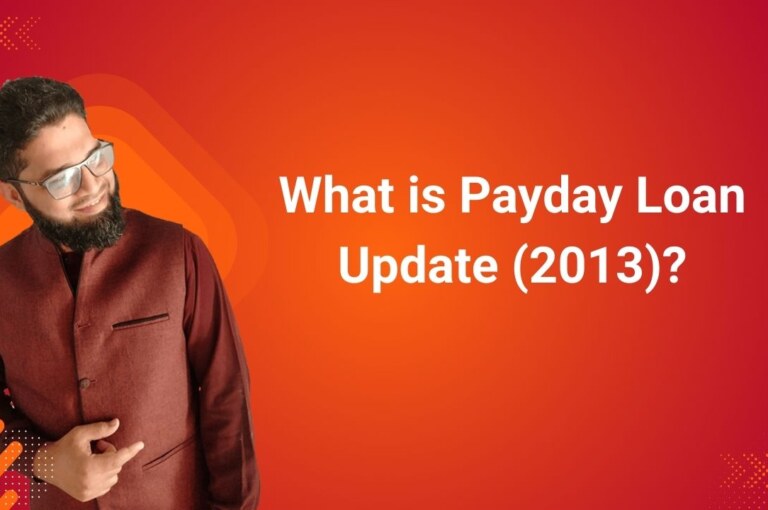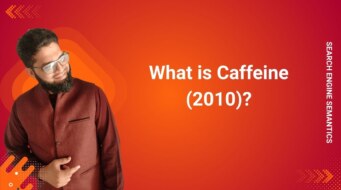What is Payday Loan Update (2013)?
The Google Payday Loan Algorithm Update, first launched on June 11, 2013, was designed to combat spammy search results in highly competitive and high-risk industries. Google rolled out this update to target search queries related to payday loans, pornography, pharmaceuticals, gambling, and other spam-heavy sectors, where black-hat SEO tactics were commonly used to manipulate rankings.
This update focused on devaluing websites that engaged in link spam, keyword stuffing, cloaking, and other deceptive SEO techniques. Unlike broad algorithm updates like Panda (content-focused) and Penguin (link-focused), the Payday Loan update was specifically aimed at industries with a high concentration of spam.
Google continued refining the Payday Loan algorithm with additional updates in 2014, further tightening its ability to detect and penalize manipulative SEO practices.
Why Did Google Introduce the Payday Loan Algorithm Update?
Before this update, search results for certain industries were overrun by low-quality, spam-driven websites. Many of these websites dominated rankings not because they provided valuable content, but because they aggressively manipulated SEO techniques.
Google introduced the Payday Loan Algorithm Update to address several key issues:
Manipulative Backlink Schemes:
Websites in the payday loan, adult, and pharmaceutical industries often used:
- Paid backlinks from spammy websites to artificially boost rankings.
- Link farms and private blog networks (PBNs) to manipulate domain authority.
- Hacked websites to insert hidden links without the owner’s knowledge.
Over-Optimization and Keyword Stuffing:
Some websites abused exact-match keywords, creating low-value content that was unreadable but ranked well. Examples included:
- Domain names stuffed with payday loan keywords (e.g., “bestpaydayloans-fastapproval.com”).
- Excessive keyword repetition in titles, meta descriptions, and body content.
Cloaking and Deceptive Redirects:
- Many spam sites showed different content to Google’s bots than to real users.
- Some websites redirected users to different pages, often leading to malware or scams.
Hacked Websites Being Used for SEO Manipulation:
- Hackers would inject hidden payday loan-related links into legitimate websites to manipulate rankings.
- This update helped detect and remove spam injected into compromised sites.
Google aimed to improve the quality of search results and ensure that users found trustworthy, relevant information instead of deceptive spam sites, by introducing this update.
How Did the Payday Loan Algorithm Update Work?
Unlike Google’s broad updates like Panda and Penguin, the Payday Loan Algorithm targeted specific industries and search queries that were known for excessive spam.
Query-Based Spam Filtering:
- Instead of affecting all websites, this update only impacted search queries that had a high concentration of spam.
- Google applied a new spam filter to payday loans, adult content, pharmaceuticals, gambling, and other high-risk searches.
Link Spam Detection:
- Google analyzed backlink profiles and devalued manipulative link-building strategies.
- Websites with high volumes of unnatural, spammy backlinks lost rankings.
Over-Optimization and Keyword Analysis:
- Sites that relied on keyword stuffing and aggressive on-page SEO tactics were demoted.
- Natural, high-quality content was favored over excessive keyword optimization.
Cloaking and Hacked Site Detection:
- Google improved its ability to detect when websites used cloaking techniques to show different content to search engines vs. users.
- Websites that were hacked and injected with spam links were flagged and removed from search results.
This algorithm update was rolled out gradually, with Google making further refinements in 2014 to strengthen its detection systems.
What Types of Websites Were Affected by the Payday Loan Update?
The Payday Loan Algorithm specifically targeted industries that had a high concentration of SEO spam, including:
Websites That Were Negatively Impacted:
Many payday loan lenders relied on spammy SEO tactics and were significantly affected.
Websites in this industry often used excessive link-building and cloaking tactics to manipulate rankings.
Many online pharmacies engaged in aggressive link schemes and keyword stuffing.
Many legitimate sites were hacked and used to insert payday loan-related links without the owner’s knowledge.
Websites That Benefited from the Update:
Companies with transparent, reputable lending practices saw improved rankings.
Google rewarded websites that demonstrated credibility, especially in finance-related topics.
Sites that earned backlinks naturally, rather than buying or spamming links, saw ranking improvements.
What Were the Key Ranking Factors Targeted by the Payday Loan Update?
Google specifically targeted manipulative ranking tactics that were commonly used in high-spam industries.
Unnatural Link Building and Spammy Backlinks:
- Excessive paid links, link farms, and PBNs were devalued.
- Comment spam and forum link manipulation were penalized.
Keyword Stuffing and Over-Optimization:
- Websites that repeated payday loan-related keywords unnaturally were flagged.
- Overuse of exact-match domain names was also targeted.
Cloaking and Deceptive Practices:
- Hiding content from users while showing something different to Google resulted in penalties.
- Redirecting users to unrelated spammy pages triggered ranking drops.
Hacked Websites Used for SEO Manipulation:
- Websites that unknowingly hosted payday loan spam lost rankings.
- Google improved its detection of injected spam links on hacked domains.
How Can Websites Recover from a Payday Loan Update Penalty?
If a website was penalized by the Payday Loan update, it needed to fix spammy SEO tactics and focus on legitimate, user-first content.
Clean Up Unnatural Backlinks:
- Identify spammy backlinks using Google Search Console.
- Remove or disavow toxic links through Google’s Disavow Tool.
Improve Content Quality:
- Replace keyword-stuffed pages with informative, well-written content.
- Focus on E-E-A-T (Experience, Expertise, Authority, Trustworthiness) by adding expert contributors.
Fix Cloaking or Redirect Issues:
- Use Google’s Fetch as Google tool to ensure the site shows the same content to users and search engines.
- Eliminate deceptive redirects that send users to unrelated pages.
Secure Websites from Hacking:
- Run regular security checks to prevent hackers from injecting payday loan spam.
- Use stronger passwords and security plugins to prevent unauthorized access.
Websites could recover rankings and regain Google’s trust, by removing spammy tactics and improving user experience.
How Did the Payday Loan Update Influence Future Google Algorithm Changes?
This update paved the way for stricter anti-spam measures in later Google updates, such as:
Penguin 4.0 (2016)
Made spam detection real-time, rather than requiring periodic updates.
Medic Update (2018)
Strengthened Google’s focus on trust and credibility, particularly in finance and health industries.
SpamBrain AI (2021-Present)
Uses machine learning to detect spammy SEO tactics continuously.
What Is the Long-Term Impact of the Payday Loan Algorithm Update?
- Black-hat SEO tactics became less effective, forcing businesses to focus on real value.
- E-E-A-T (Experience, Expertise, Authority, Trustworthiness) became essential for ranking in financial and health sectors.
- Google continues to refine spam detection, ensuring that search results remain high-quality and relevant.
Final Thoughts on Payday Loan Update
The Google Payday Loan Algorithm Update launched in 2013 targeted high-risk industries like payday loans, gambling, and adult content, which often relied on spammy SEO tactics. The update aimed to filter out sites using manipulative techniques like link spam, keyword stuffing, cloaking, and hacked websites. Google prioritized legitimate, high-quality content and penalized sites relying on SEO tricks rather than value for users. Websites engaging in deceptive practices saw their rankings drop, while those with trustworthy practices and organic content benefitted.
The update influenced future algorithm changes like Penguin 4.0, Medic Update, and SpamBrain AI, continuing to evolve Google’s focus on trust, authority, and quality content, especially in sectors like finance and health. The long-term impact was a shift away from black-hat SEO tactics, driving businesses to create more valuable, user-focused content.
Want to Go Deeper into SEO?
Explore more from my SEO knowledge base:
▪️ SEO & Content Marketing Hub — Learn how content builds authority and visibility
▪️ Search Engine Semantics Hub — A resource on entities, meaning, and search intent
▪️ Join My SEO Academy — Step-by-step guidance for beginners to advanced learners
Whether you’re learning, growing, or scaling, you’ll find everything you need to build real SEO skills.
Feeling stuck with your SEO strategy?
If you’re unclear on next steps, I’m offering a free one-on-one audit session to help and let’s get you moving forward.




